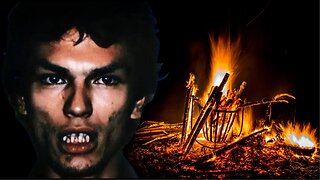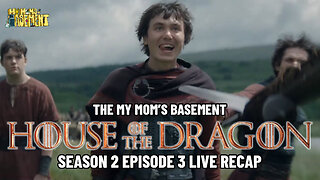"The Terror", by Arthur Machen
0:00:00 Chapter 1 - The Coming of the Terror
0:26:05 Chapter 2 - Death in the Village
0:32:53 Chapter 3 - The Doctor's Theory
0:50:18 Chapter 4 - The Spread of the Terror
1:06:10 Chapter 5 - The Incident of the Unknown Tree
1:22:02 Chapter 6 - Mr. Remnant's Z Ray
1:36:10 Chapter 7 - The Case of the Hidden Germans
1:51:02 Chapter 8 - What Mr. Merritt Found
2:05:12 Chapter 9 - The Light on the Water
2:19:55 Chapter 10 - The Child and the Moth
2:33:13 Chapter 11 - At Treff Loyne Farm
2:47:49 Chapter 12 - The Letter of Wrath
3:06:22 Chapter 13 - THe Last Words of Mr. Secretan
3:22:31 Chapter 14 - The End of the Terror
----
This story was written in 1916 and published in 1917, so right during the peak of the First World War.
There are places where Machen references things in this story that appear in other of his stories. He likes to use Meirion and Porth as settings in plenty of other stories, for example. Dragon's Head appears in the story "Change". Saint Teilo appears in "The Tree of Life". There may be others, but I have yet to read the entirety of Machen's repertoire. If you recognize any others, drop it in the comments!
The pictures used are:
Chapter 1: A swarm of birds
Chapter 2: Pembrokeshires Coast National Park, Pembrokeshires, Wales, by cattan2011, and used here under the Creative Commons Attribution 2.0 Generic license (https://creativecommons.org/licenses/by/2.0/)
Chapter 3: Dr. Jekyll/Mr. Hyde
Chapter 4: wrecked warehouses and scattered debris attest to power of the Black Tom Explosion of July 30, 1916. This specific incident happened in the USA, but it's what an actual act of genuine German sabotage looked like in the Great War
Chapter 5: Powis Castle, Puoti Castle, terraced gardens, Powys, Wales, by Sjwells53, used here under the Creative Commons Attribution-ShareAlike 3.0 Unported license (https://creativecommons.org/licenses/by-sa/3.0/deed.en). While we can't expect Dr. Lewis to live in Powis Castle, he does live somewhere fancy enough to have a terraced garden, and apparently Powis Castle is noted for its terraced garden, so the use of this picture is to give you some idea of what a genuine Welsh terraced garden might look like
Chapter 6: a British munitions factory during WW1. You can easily see why it would be such a tempting target
Chapter 7: a supply chamber in the underground tunnels built into Gibralter during WW2
Chapter 8: "teifi marshes marsh marigolds" by incredible how, used here under the Creative Commons Attribution-NonCommercial-NoDerivs 2.0 Generic license (https://creativecommons.org/licenses/by-nc-nd/2.0/)
Chapter 9: "Rhossili Bay (Gower Peninsula, South Wales.)" by Andrew Bone, used here under the Creative Commons Attribution 2.0 Generic license (https://creativecommons.org/licenses/by/2.0/)
Chapter 10: "Dilapidated stile and tied up pedestrian gate; Above the abandoned hill farm of Old Rookland." by Russel Wills, used here under the Creative Commons Attribution-ShareAlike 2.0 Generic license (https://creativecommons.org/licenses/by-sa/2.0/)
Chapter 11: Draenogan Farm Welsh Black cattle grazing by David Saunders, used here under the Creative Commons Attribution-ShareAlike 2.0 Generic license (https://creativecommons.org/licenses/by-sa/2.0/)
Chapter 12: the Rhosson Uchaf Farmhouse in St. Davids, Pembrokeshire
Chapter 13: "The Winepress of the Wrath of God, from the Apocalypse" by Jean Duvet, 16th century, currently located in the Metropolitan Museum of Art in New York City
Chapter 14: "A world in perplexity" (1918) by Arthur Grosvenor Daniells, based on chapter 11 of the book of Isaiah
To follow along: https://www.gutenberg.org/files/35617/35617-h/35617-h.htm
-
 18:40
18:40
GeekyNerdyTechy
23 hours agoGVM SD300B Pro Tutorial & Review - Powerful, Versatile, and Beautiful!
731 -
 23:44
23:44
DepressedGinger
1 day ago $0.20 earned*FIRST* Donald Trump vs Gavin Newsom Election Prediction if Biden drops out
1.35K5 -
 15:23
15:23
Freakin' Reviews
21 hours agoTesting Two Products From Walmart's As Seen on TV Aisle! Mr. Beast Lunch Box & Cool 360
1.31K6 -
 36:34
36:34
TheTapeLibrary
1 day ago $0.09 earnedScary Stories Around The Campfire: 3 More Creepy Tales To Keep You Up At Night
1.88K4 -
 0:55
0:55
Hannah Barron
19 hours agoFish Sticks!
4.27K14 -
 36:34
36:34
Science & Futurism with Isaac Arthur
23 hours ago $0.23 earnedFree Will, Quantum & Orchestrated Objective Reduction
2.6K8 -
 15:49
15:49
Degenerate Jay
3 days ago $0.15 earnedThe Rejected Assassin's Creed Nintendo Game - Assassin's Creed Lost Legacy
4.45K4 -
 11:11
11:11
America Uncovered
15 hours ago $0.36 earnedI Regret to Inform You the Debate Was Worse Than You Imagined
17.4K26 -
 13:25
13:25
TimcastIRL
23 hours agoCIA EXPOSED For Colluding With Biden Admin To COVER UP Hunter Biden Laptop
47.9K111 -
 1:17:18
1:17:18
My Mom's Basement with Robbie Fox
17 hours agoHOUSE OF THE DRAGON SEASON 2 EPISODE 3 LIVE RECAP WITH CLEM AND KFC | MY MOM'S BASEMENT
46.2K9